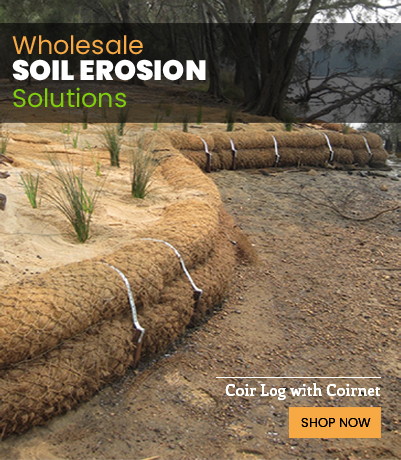Soil erosion is caused by a number of factors, including urban building, natural forces, and heavy traffic. Rain, wind, physical disturbance, and overuse promote soil erosion and water runoff. While it’s not possible to prevent all elements of erosion, there are some things you can do to limit damage and promote root growth. One way to control water runoff in your garden is by using compost filter socks.
Compost Filter Sock
Also known as silt socks, compost filter socks are commonly used in landscaping and home gardening. They are mesh tubes filled with composted wood chips, bark, and other materials. The socks’ organic build is designed to allow maximum filtration. It also means the socks are very effective at filtering water runoff and controlling sediment loss. Heavy-duty compost filter socks will perform well even under extreme conditions.
In areas with high sediment flow, filter socks can prevent sediment runoff. While they aren’t the most attractive addition to a garden or landscape, they are certainly some of the most effective.
Filter socks are installed downslope of areas where erosion and sediment control are needed. They can also be used in place of silt fences, on paved areas, near sensitive trees, or on frozen ground. A compost filter sock is a great alternative if you don’t want to dig trenches or disturb the ground in an area where you have established vegetation.
Filter Sock Applications
The most common uses for filter socks include water diversion, perimeter control, slope interruption, ditch check, and as an alternative to silt fences.
If you are trying to manage rain or stormwater movement, compost filter socks can be used to slow, interrupt, or divert water. This will redirect water away from areas where it could cause damage or erode soil. These socks can also reduce the speed at which water runs down a sloped bank, which helps with erosion control.
For existing water bodies, such as rivers and ponds, compost filter socks can prevent steeped banks from running into the water. This also helps with land stabilization. Placing filter socks along a channel bed makes for an excellent retaining wall to promote the growth of new and existing vegetation.
Because moving water also tends to carry sediment, filter socks help control both water runoff and sediment erosion. If you’re building up a new area of your garden or landscaping, you can use compost filter socks to create a boundary. This will trap and retain sediment and water, preventing destruction.
Compost filter socks are economically viable options for erosion control and water runoff. There is little cost to install, clean up, or dispose of them. When you no longer need the socks for erosion control, you can cut them open and use the filling as compost directly where they lie. You can simply dispose of the mesh, which requires minimal effort in comparison to dismantling fencing and other alternatives. The organic content in compost filter socks is also good for the environment and will promote new seed growth.

Leave a Reply